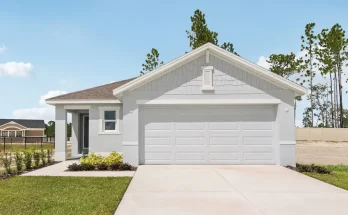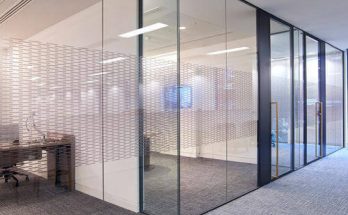When designing or renovating a home, maximizing space is often a top priority—especially in small rooms, apartments, or contemporary spaces where every square foot counts. The type of door you choose can greatly impact the amount of space available as well as the aesthetic appeal of your design. Whether you opt for folding doors, sliding doors, or casement doors, each has its own unique set of advantages.
In this blog, we’ll explore the space-saving potential of these three types of doors, with a particular focus on casement doors, and evaluate their suitability for different types of homes.
Why Space Efficiency Matters in Home Design
In busy households or small spaces, the wrong door can make rooms feel cramped or restrict movement. Space-efficient doors can improve accessibility, allow for better furniture arrangements, and even open up possibilities for creative layouts.
Choosing the right door isn’t just about style—it’s about making smart choices that balance practicality with aesthetics.
What Are Casement Doors?
Casement doors are classic, hinge-based doors that open either inward or outward. Unlike folding or sliding doors, they feature a swing mechanism that provides full accessibility to the doorway. Casement doors work well in modern, rustic, or traditional homes due to their timeless design and versatility.
While they may not be as space-efficient as sliding or folding doors in some scenarios, casement doors have their own set of benefits that make them worth considering, even in space-conscious designs.
How Casement Doors Contribute to Space-Saving Design
1. Slim Profiles for Tight Openings
Casement doors can be custom-fitted for small openings, making them a practical option for compact entryways or doors leading to secondary rooms, such as pantries, laundry areas, or small balconies. Their slim profiles can help minimize intrusion into the surrounding space.
2. Vertical Panels for Small Spaces
Single casement doors are particularly effective in tight spaces since they have a single vertical panel that swings open, preserving simplicity while providing seamless functionality. When appropriately placed, they take up minimal floor space and integrate easily with other elements of the room’s design, such as cabinets, furniture, and decor.
3. Inward Opening Options
One way to optimize space efficiency with a casement door is to have it swing inward. This approach prevents the door from interfering with outdoor areas and landscaping, such as a patio or hallway, while maintaining a clear and functional path inside.
4. Versatile Materials for Seamless Integration
Casement doors can be crafted using a variety of materials, such as wood, aluminum, glass, or UPVC, which makes them highly adaptable to modern space-saving designs. For example, glass-panel casement doors can visually expand an interior, creating a sense of openness. Their light-transmitting properties can brighten compact rooms, making them feel larger and more inviting.
5. Customization for Unique Layouts
Unlike sliding doors that are often restricted to tracks or folding doors that require stacking space, casement doors are highly customizable to suit unique layouts. Whether placing casement doors in alcoves, closets, small bathrooms, or traditional doorways, the flexibility of their design makes them valuable for creative space-saving solutions.
Casement Doors vs. Sliding Doors vs. Folding Doors
When to Choose Casement Doors
Casement doors are a great choice when:
You want a classic or timeless design that can work in both modern and traditional homes.
Space isn’t extremely tight, and you don’t need the additional room-saving benefits of sliding or folding mechanisms.
You’re prioritizing energy efficiency, as casement doors provide an airtight seal that prevents drafts.
You want versatile material options that can match various aesthetics (e.g., solid wood or glass-paneled designs).
How Sliding Doors Compare
Aluminum sliding doors are the epitome of space-saving design, as they require no swing radius. They work best for homes with limited floor space or areas where movement needs to be unobstructed, such as hallways or rooms with large furniture.
While sliding doors win in terms of maximizing floor area, they are not always ideal for creating a tight seal or offering full-width accessibility to the doorway.
How Folding Doors Compare
Folding doors (bi-fold doors) can be great for opening up small spaces to larger areas, such as balconies, patios, or other extensions. When opened, their stackable design allows the doorway to fully utilize its width.
However, aluminum folding doors require stacking space for the panels, and they can feel somewhat cumbersome in smaller rooms that don’t have the capacity to house the folded panels.
Designing Small Spaces with Casement Doors
1. Adding Glass Panels
Use casement doors with glass inserts to visually expand small spaces. Frosted or clear glass panels can reflect light, making even the tightest rooms feel brighter and more open.
2. Space-Conscious Configurations
In tight hallways or rooms, inward-opening single-panel casement doors are ideal. They maximize pedestrian flow and functionality while requiring minimal clearance.
3. Pairing with Modern Aesthetics
For a sleek and contemporary look, opt for aluminum casement doors with slim profiles. This material pairs well with modern design principles and adds a minimalist touch to compact spaces.
4. Energy Efficiency in Compact Homes
If insulation and energy savings are key considerations, casement doors with tight seals and double-glazed glass can provide excellent thermal performance in small spaces.
While folding doors and sliding doors excel in certain scenarios for saving space, casement doors remain a versatile and stylish option that can be adapted to fit many layouts. Their timeless appeal, practical customization options, and efficient sealing make them a smart choice for smaller homes or rooms where classic functionality is desired.
Whether you’re designing a space-saving pantry, a compact entryway, or an elegant bathroom door, casement doors offer a practical and aesthetically pleasing solution that can seamlessly integrate with modern living.



